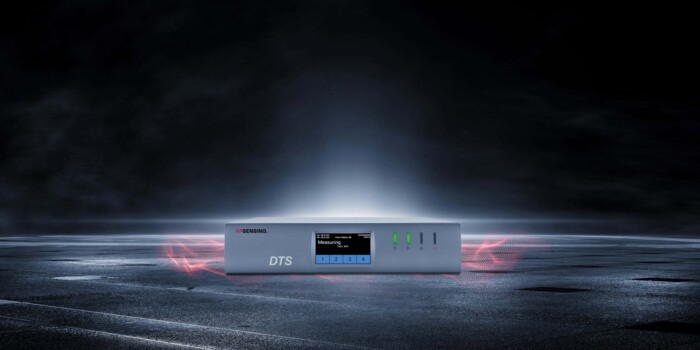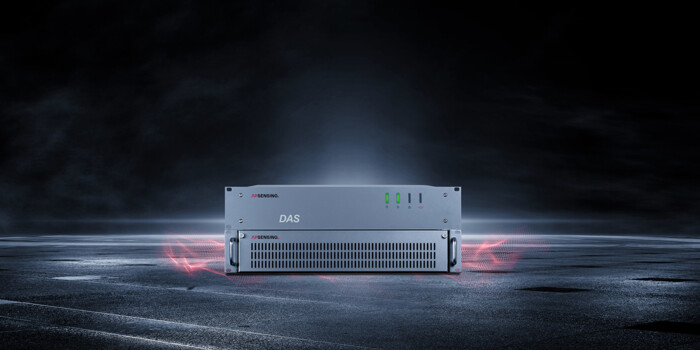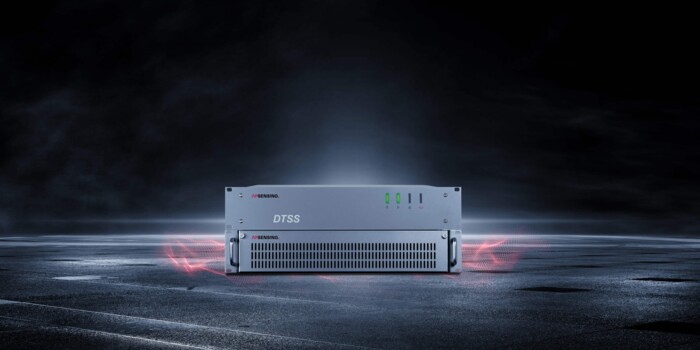Powerful and Scalable Solutions for Large and Remote Structures
The advancement of new subsurface technologies – such as Carbon Capture & Storage (CCS) for reducing greenhouse gas emissions, geothermal applications, and monitoring natural hazards like landslides, rockfalls, volcanoes, and earthquakes – demands measurements under extreme conditions. Additionally, critical infrastructure projects, such as mining sites, railways, windfarms, and dams require extensive sensing capabilities.
Recent innovations in fiber optic sensing have opened up new opportunities for geophysical applications in energy sector, and various critical infrastructure projects. These systems enable high-resolution data collection over vast distances, making them ideal for large and remote structures.
By providing real-time insights into subsurface conditions, fiber optic sensing enhances the detection of potential hazards and optimizes resource management. As a result, these robust solutions are essential for ensuring safety and sustainability in increasingly complex environments.
Current Challenges in Geophysical Monitoring and Threat Mitigation
The energy sector faces significant challenges, including the necessity to reduce carbon emissions and integrate renewable energy sources. These challenges require innovative solutions and effective monitoring strategies. Geophysical monitoring is crucial across various aspects of the energy sector, encompassing the assessment of potential sites for current and future projects, as well as ongoing monitoring. A comprehensive understanding of geological conditions is vital for the sustainable and safe development of resources, making geophysical monitoring essential for numerous applications.
In addition to energy projects, geophysical monitoring is vital for the oversight of critical infrastructures such as dams, mines, and railways. These structures face the following challanges:
- Continuous assessment to ensure safety and operational integrity, particularly in the face of natural hazards.
- Reliable real-time monitoring, often in harsh environments.
- Capability to measure assets of various lengths.
Achieving accurate measurements over distances ranging from a few centimetres to over 100 km presents unique challenges, as traditional sensing methods frequently fall short due to issues of cost, practicality, and limited applicability.
AP Sensing's Fiber Optic Monitoring Solutions for Geophysical Monitoring
AP Sensing addresses these needs by providing robust solutions designed for long-term, long-range monitoring. Our systems are suitable for various structures, including hard-to-reach underground installations, even in extreme environments like glaciers, deserts, boreholes, and subsea power cables.
Key Advantages
AP Sensing's DFOS is a well-established solution for various applications, providing significant advantages such as:
Continuous and Real-Time Monitoring
Fiber optic sensing systems, such as Distributed Acoustic Sensing (DAS), Distributed Temperature Sensing (DTS), Distributed Strain Sensing (DTSS) offer an effective solution by providing continuous, real-time data across large areas.
Reduction of Operational Costs and Scalability
DFOS not only reduce costs but also provide the scalability needed for both small-scale and extensive applications.
High Adaptive Installation Possibilities
Fiber optic sensing is highly adaptable to locations where traditional point sensors are impractical or where infrastructure may be difficult to install.
Excellent System Robustness
Furthermore, fiber optic sensing excels in harsh and remote environments, making it ideal for scientific studies in extreme conditions like deep offshore installations.
Technologies Used in Geophysical Monitoring
Distributed Temperature Sensing (DTS)
AP Sensing’s DTS is based on the proven Raman optical time domain reflectometry technology (R-OTDR). AP Sensing uses its patented code correlation OTDR (CC-OTDR) that allows utilization of low optical power. It eliminates any problems with laser degradation and enables worry-free, long-term measurement stability.
AP Sensing’s DTS solution provides real-time temperature data, offering operators a precise and continuous view of asset conditions. By monitoring temperature profiles and trends over time, operators can track temperature process 24/7.
Key Features:
- Multimode and single-mode instruments
- Single-/dual-ended configurations
- Longest measurement range of up to 70 km
- Spatial resolution of 0.5 m, measurement time down to 1 sec
- Modern, easy-to-use web interface for easy set-up and system configuration
- Wide operating temperature range from -10 to +60 °C
- Low power consumption
- Laser Class 1M with low optical output for safe operations
Distributed Acoustic Sensing (DAS)
AP Sensing’s phase-based DAS system measures the acoustic vibrations on the fiber based on the principles of coherent optical time domain reflectometry (C-OTDR). The revolutionary 2P Squared technology of DAS provides a true linear measurement of dynamic fiber length changes caused by strain from acoustic/vibration signals or temperature fluctuations.
In recent years, fiber-optic Distributed Acoustic Sensing (DAS) has gained substantial traction in many geophysical applications. Unlike conventional point sensors, DAS presents numerous key benefits: ability to deliver continuous, high-resolution data both spatially and temporally over distances exceeding 100 kilometers; ability to detect wide frequency range caused by seismic waves at frequencies reaching hundreds of hertz.
Key Features:
- The true, phase-based system allows for quantitative data interpretation
- Configurable gauge length
- Leading performance with standard fiber without additional amplification
- Performance tests based on SEAFOM recommendations
- Modular edge computing for real-time process optimization
- Laser Class 1 with low optical output for safe operations
Distributed Temperature Strain Sensing (DTSS)
AP Sensing’s DTSS is based on the Brillouin optical time domain reflectometry (BOTDR) technology. BOTDR operates with a large optical budget on a single-ended fiber, being less affected by changes in fiber attenuation. BOTDR enables extensive and accurate measurements of both temperature and strain within the sensing range.
Key Features:
- Single-ended design – no loop required
- 80 km + measurement range with multiple internal optical channels
- High optical budget ensures outstanding measurement performance
- Practical and user-friendly web interface for easy commissioning
- Resistant to hydrogen darkening of optical fibres
- Laser Class 1M with low optical output for safe operations
Key Takeaways of DFOS Value in Geophysical Monitoring
- Dam Monitoring: Temperature serves as a critical indicator of seepage within levees, earth dams, and their foundations. Implementing permanent DTS enables real-time seepage detection, enhancing safety and maintenance strategies.
- Mining Operations: DFOS systems facilitate safe and continuous monitoring of mining sites, allowing for early detection of potential hazards and ensuring operational integrity.
- Seismic Imaging: Utilizing DAS for both borehole and surface seismic monitoring provides high-resolution imaging of subsurface structures, significantly improving exploration accuracy and risk assessment.
- Earthquake Monitoring: Continuous geophysical monitoring using fiber optic technologies enhances early warning capabilities and helps assess seismic activity's impact, ensuring better preparedness and response to earthquakes.
- Environmental Impact: The minimal footprint of fiber optic sensing systems reduces environmental disruption, making them ideal for monitoring sensitive ecosystems while gathering crucial data for infrastructure safety.
With a proven track record and continued innovation, AP Sensing offers a completely integrated, end-to-end solution made in Germany. Our team works together with you to select the right combination of technologies to fit your requirements. We also provide onsite services, hotline and online support, maintenance and product training.
Find all our brochures, application flyer, product flyers, videos and further case studies in our media library.






